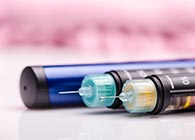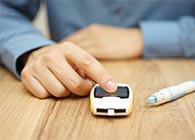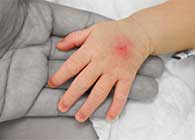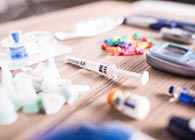Diabetes and Tattoos
By Martin Hirst
CEO, InDependent Diabetes Trust
Why should we talk about diabetes and tattoos?
Tattoos are a cultural phenomenon that exist in most parts of the world. They can be used to signify things like social status or family history as in Polynesian culture or as a form of art often seen, for example, in European culture. Tattoos tend to divide people into three groups, people who can’t bare them, people who love them and those who are “tattoo-curious”. Whichever group you belong to, tattoos by their very nature are here to stay. There are now over 12 million people in the UK who have been tattooed and not surprisingly some of them have diabetes as well and in this article we look at various aspects of getting tattooed if you have diabetes.
What is a tattoo?
Most of us know what a tattoo looks like and that it involves putting ink under the skin. One thing people with diabetes could get annoyed about is the number of websites that refer to ink being injected under the skin. Both processes involve needles but that is where the similarity ends. We won’t bore you with the mechanics of injecting – you know that all too well. When getting a tattoo, the machine puts a very small pool of ink on the surface of the skin, the needle then punctures the skin through the ink and is withdrawn. The ink then flows into the resulting very small hole – no injections involved!
What to get and where to have it
In short, that is up to you. My own rule of thumb has been that if you have a design in mind then wait a year – if you still want it after a year, then the chances are you are likely to be happy with it and not regret it later (laser removal really hurts). Young adults with Type 1 are increasingly having ink work done stating that they have Type1 diabetes rather than items such as medic alert bracelets. While this is not a bad idea there could be an industry standard developed for say, layout and location. The pictures below illustrate what I mean:
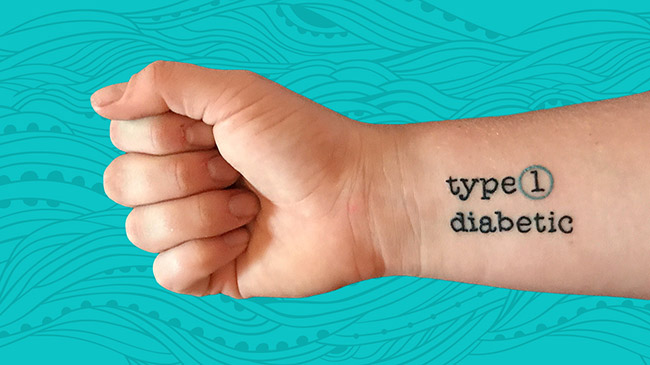
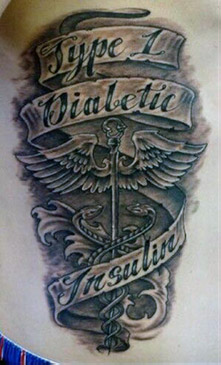
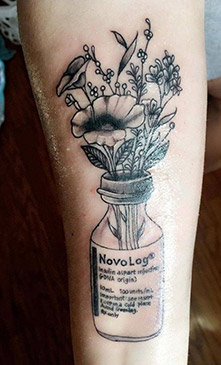
In terms of where to get it placed, that is largely up to you – they all hurt! – but sensible advice is to avoid injection sites.
Precautions when getting tattoos
There are precautions that anybody should take when getting a tattoo. These include:
- Use a reputable tattooist, registered with environmental health and ask to see some of their previous work.
- Keep the tattooed skin clean before and after. Use plain soap and water and a gentle touch – don’t scrub.
- Use moisturizer. Apply a mild moisturizer to the tattooed skin several times a day.
- Avoid sun exposure.
- Avoid swimming.
- Choose clothing carefully.
- Allow up to 2 weeks for healing.
If you have diabetes then other things you need to consider are:
- Make sure you are in generally good health and your diabetes is well controlled.
- Tattooing may cause your blood sugar levels to rise during the work so check these regularly, particularly if your work is likely to take a long time.
- You should be asked to complete a comprehensive health questionnaire beforehand but it is also worthwhile checking that the tattoo artist knows what to do if difficulties arise.
- If you feel unwell or your tattoo shows any sign of infection afterwards the seek medical advice as soon as possible.
The Future
We started this article by saying that tattoos are not going to go away and developments for the future may make them even more useful.
In the near future, tattoos could provide an easier, quicker and more accurate way for people with diabetes to track and control their blood glucose levels.
Over the past few years, American scientists have been developing a skin-borne continuous blood glucose monitor that consists of a ‘tattoo’ of tiny particles of nanotechnology ink that are sensitive to glucose concentrations.
The ink is injected below the skin and is designed to fluoresce when it encounters glucose.
A wristwatch-like device worn over the nano-tattoo would be used to detect and measure the amount of fluorescence, and thus blood glucose levels would be continuously monitored, hopefully leading to better glycaemic control.
Back to news archive

